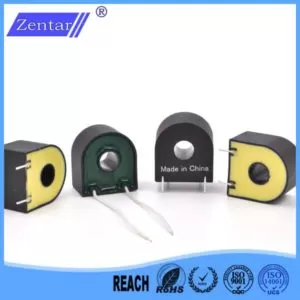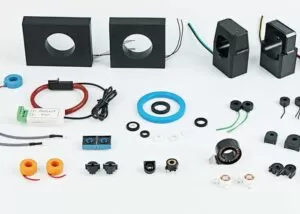How Higher Q Values Reduce Loss in Coil Windings
In electrical engineering, the quality factor, or Q value, of a coil is a crucial indicator of its efficiency and performance. The Q value represents the ratio of the inductance to the equivalent circuit loss resistance at a specific AC frequency. A higher Q value indicates lower losses and greater efficiency, making it a fundamental parameter in coil design and application.
Key Strategies to Improve the Q Value of Coils
1. Optimize Coil Winding Techniques
-
Low Frequency Bands: For frequencies below 2MHz, use multi-strand insulated transmission lines for winding. This increases the conductor surface area, reducing the skin effect and enhancing the Q value by 30%-50% compared to coils wound with single transmission lines of the same cross-sectional area.
-
High Frequency Bands: Above 2MHz, opt for single thick transmission lines (0.3mm-1.5mm in diameter). Gold-plated copper wires are preferred as they improve conductivity and reduce losses at high frequencies.
2. Select High-Quality Coil Frames
At higher frequencies, dielectric losses can be significant. Use materials with low dielectric losses such as high-frequency porcelain, polytetrafluoroethylene (PTFE), or polyethylene for the coil frame. Indirect winding methods can also minimize dielectric losses.
3. Choose Effective Coil Specifications
The dimensions of a coil greatly influence its performance:
-
Single-layer Coils: Optimal loss reduction occurs when the ratio of winding length L to diameter D (L/D) is around 0.7.
-
Multi-layer Coils: For coils with diameters allowing L/D ratios between 0.2 to 0.5, maintaining a winding thickness t to diameter D (t/D) ratio of about 0.25 to 0.1 minimizes loss.
4. Consider Shielding and Magnetic Cores
-
Shielding: While necessary for reducing electromagnetic interference, shielding can decrease the Q value. A shield diameter to coil diameter ratio (Ds/D) of 1.6 to 2.5 ensures minimal Q value reduction.
-
Magnetic Cores: Incorporating magnetic cores can reduce the coil’s turn count, lowering resistance, enhancing the Q value, and compacting the coil’s size.
5. Coil Diameter and Distributed Capacitance
-
Coil Diameter: Larger coil diameters can decrease losses. For single-layer coils, diameters typically range from 12mm to 30mm; for multi-layer coils, 6mm to 13mm is standard, though dimensions should ideally not exceed 20mm to 25mm considering overall volume.
-
Distributed Capacitance: To reduce this, consider winding methods that avoid traditional skeletons, such as using rib-type skeletons, which can decrease distributed capacitance by 15%-20%. Segmented winding can reduce capacitance in multilayer coils by up to 50%.
Conclusion
Improving the Q value during the coil winding process is essential for enhancing the efficiency and effectiveness of electrical coils. By carefully selecting materials, optimizing design specifications, and employing advanced winding techniques, engineers can significantly reduce losses and improve overall coil performance. This not only leads to better electrical devices but also advances in how we manage and utilize electromagnetic technologies.




